“Carnivale” in Italy
March 16, 2022
Recently, for one of my duties as a member and President of the Raffaello Sanzio Italian Honor Society chapter at FTHS, I had to give a presentation on a current event in Italy for our recent meeting. Ever since taking the language that has now certified me as bilingual, I’ve fallen in love with my culture and its language. Being a third generation Italian American, I felt it was important to explore this. However, even with the class and all the bi-literacy tests I take, I can still unfortunately say that I don’t know much about my roots besides the cultural videos we watch and the cultural readings we translate in class. So, for this task, instead of looking something up, I decided to call my Nonna and ask her first hand about any events happening in Italy at the time. This was when I first learned about “Carnevale.”
“Il Carnevale,” also called Mardi Gras or Carnival in the United States, is a time of color and freedom in Italy where Italians are free to do whatever they please before the restricting 40 days of Lent begin. With Italy being so big on Catholic rituals, these 40 days mark a time where parties, meat, sugar and fats are forbidden, making the celebration almost like a last hurrah before this time of holy preparation for Easter. The festivities typically start around a month before Ash Wednesday, with many of the biggest happening on “Martedi Grasso,” or “Fat Tuesday” in English. With sweeping parades, masquerade balls, elaborate masks, traditional sweets, dance-evoking parties, and tons of mischief, “Il Carnevale” is truly a spectacular event, celebrated for multiple weekends across all of Italy. It is thus no surprise that people often say, “a Carnevale ogni scherzo vale!” which means “Anything goes at Carnevale!”
However, “Il Carnevale” does not look the same in every part of Italy, as each has their own traditions, such as the Battle of the Oranges or Horse Jousting.
With 3 million people traveling here every year, Venice’s version of “Carnevale” is by far the biggest and most famous. Starting on February 12th this year, the two week festival transforms public areas into showcases for actors, acrobats, and musicians, filling the streets with mischief and elaborate masks and elegant costumes. Since the 1500s, Venetians would wear masks as a way of hiding their identity to truly celebrate this time without consequence. Other than the masks, Venice is also famous for its gondola and boat parades along the Grand Canal, as well as for its fireworks show in Piazza San Marco.
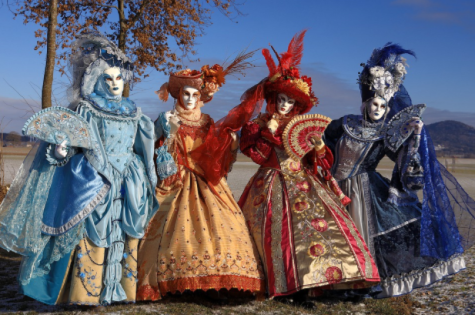
Following Venice, Viareggio has possibly the next largest celebration of “Carnevale.” Being held on Fat Tuesday and the four weekends following, but before Lent, the month is filled with beautifully engineered floats, masked musical dance parties in the streets at night, and constant parades until the final one is ended with a fireworks show. Viareggio is known for their elaborate and impressive floats that, keeping true to the original reason for the town’s celebration, pokes fun at big political and cultural names. The tradition of these overly specific floats is so serious that planning them starts as soon as the festivities end!
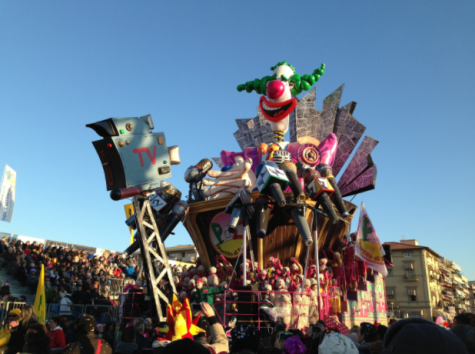
If you’ve taken Italian at FTHS, there’s no doubt you’ve heard of the Battle of Oranges before. During “Carnevale,” the previously calm town of Ivrea comes to life and finishes off with this famous “Battaglia delle Arance.” The battle, where the townspeople throw oranges at each other as either “tyrants” or “peasants” to represent throwing stones or war weapons, reenacts the local legend of Violetta. Violetta was a beautiful peasant girl who was once promised to marry the town tyrant against her will. Upon decapitating him, she initiated the rebellion by the townspeople against the control of the Royal Napoleonic Troops, which is reenacted through this battle each “Carnevale” to this day.
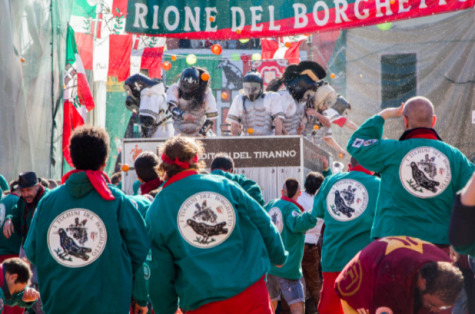
Unlike with the specific towns of these other islands, the entire island of Sardina’s ancient folklore is put on display during “Carnevale,” with each small town having its own distinct ghostly mask design. However the town of Oristano, with its festivities starting January 17th, not only holds costumed parades, but also horse races and the famous festival called “La Sartiglia,” being the reenactment of a medieval jousting tournament.
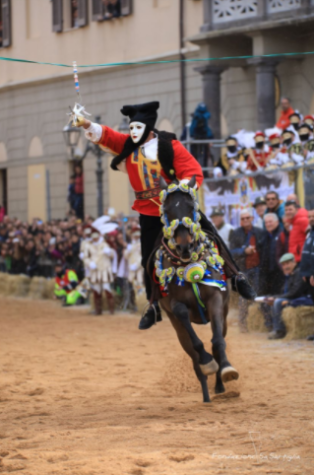
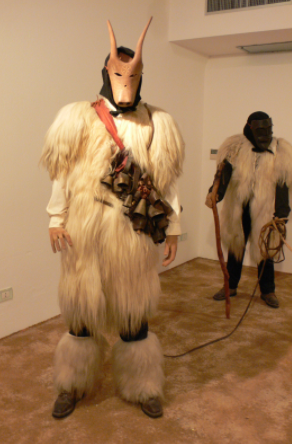
Putignano has by far the oldest and longest “Carnevale” in Italy, as they begin as early as December 26th with the “Festa delle Propaggini,” or the Feast for Santo Stefano in English, before finishing two months after with its final parade and famous “funeral” for “Carnevale.” The time in between consists of constant celebration, with the usual masks, parties, confetti, parades, and floats.
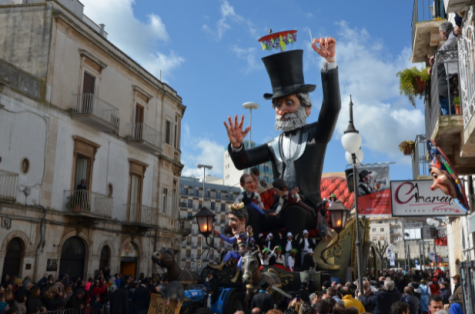
Although not as popular as the prior, I wanted to research and mention Sicily’s version of “Carnevale” so that I could learn more about its traditions, as it was most likely the celebration that my grandparents, who were born in and immigrated from Mezzojuso, Sicily, most likely grew up with. Beyond this, Acireale is still notable as, every year, it hosts one of Sicily’s most spectacular carnivals, with improvising folk poets on the streets and absolutely phenomenal floats, such as traditional ones made of flowers and paper-mache, before once again ending off the celebration with a fireworks show.
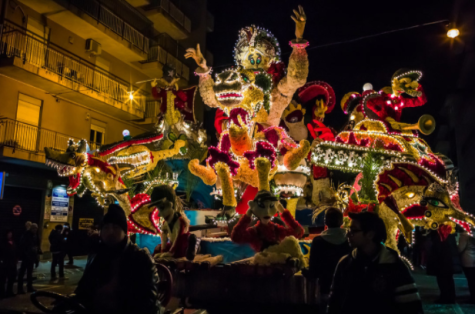
Although its occurrence at this time of the year makes it more difficult, I hope that one day I can experience “Il Carnevale” for myself, whether it be when I finally meet my relatives in Sicily, or if I travel to any of these other amazing parts of Italy. Although I may not be able to experience the celebration anytime soon, with the growing drop in COVID-19 cases in Italy, “Il Carnevale” was finally able to happen in person again this year, no doubt bringing nothing but smiles and joy to the Italians all over.






















































